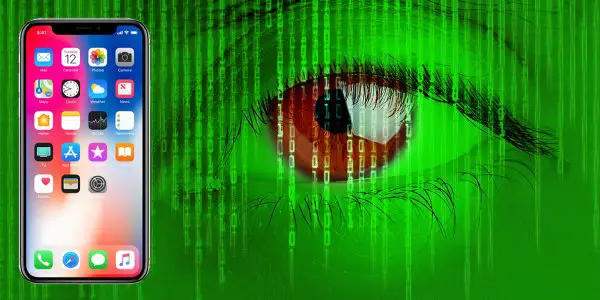iPhone X Face ID: Here’s How Mass Surveillance Has Evolved

There is a growing concern that our privacy is being threatened in unprecedented ways. The current nature of online services, apps and smartphone technologies, puts an emphasis on the free flow of information. This provides few mechanisms for individuals to have oversight and control of what they put into the digital realms.
It goes without saying that Apple Inc. are leading the technology revolution. However, with each new generation of the iPhone, there is a new threat to our privacy. Over the last six years, Apple have designed and implemented convenient, yet compromising features, such as voice recognition and fingerprint technology. Their latest model, the iPhone X, was recently unveiled and is equipped with facial recognition.
iPhone 4S: Siri, 2011
In 2011, Apple introduced the iPhone 4S with their implementation of the digital assistant Siri. The questions users ask Siri are recorded and stored (for a while). This aids the virtual helper, who uses the information to guess what users want before they even ask.
iPhone 5S: Touch ID, 2013
The iPhone 5S is revealed. It comes with a new fingerprint recognition feature – Touch ID. Many users register their fingerprint, trading their biometric data for convenience. This fingerprint scanner sparked privacy worries and many people were asking where this data being stored.
iPhone 6S: “Hey Siri,” 2015
By 2015, Apple has unveiled a new ‘Hey Siri’ feature which is built-into the iPhone 6S. This feature enables users to activate Siri at any time by saying the phrase “Hey Siri.” This raises questions surrounding surveillance as it means that the microphone has to be on at all times. An always-on microphone was a concern as it meant that the device could potentially listen to you and others nearby.
iPhone X: Face ID, 2017
The new iPhone X has rendered the home button obsolete. In its place is a built-in fingerprint reader in favour of a new biometric – called Face ID. In order to enrol the biometric, the interface asks users to tilt and turn their head. It takes 3D scans of the users face from multiple angles and uses the information to authenticate and unlock the device.
It is important to note that identifying features such as voice recordings, fingerprint scan, retina scan and facial features are key markers used in surveillance. Given the fact that these physical elements cannot be altered in the same way as a traditional password, it’s worrying when this data is put on a mobile device. Apple is the first company to have a facial recognition system with millions of profiles. As a result, they could be targeted by the Government and subject to a new type of mass surveillance order. In this instance, Apple may be required to hand over their database of facial profiles, which the Government can use to track the location of specific targets.
In the last ten years, facial recognition software has become increasingly popular. One in two American adults are already enrolled in a law enforcement facial recognition network. In addition, at least one in four police departments have the ability to run face recognition searches. Australia has also constructed a tool called “The Capability” which gives police the power to pick out faces from millions of photos. Furthermore, in the UK, police used a mass scan method to identify the faces of thousands of party-goers at this years Notting Hill Carnival.
We are clearly living in a surveillance state. In London alone there are an estimated 500,000 CCTV cameras. To make matters worse, there are already face detection CCTV cameras in use. They have the ability to scan people, identify cars, animals and bags automatically. Once we couple this technology with Apple’s new Face ID, we could see mass surveillance take on a whole new meaning. The database of iPhone users Face ID used in conjunction with the CCTV facial recognition technology, means that you could be tracked 24/7.
If you think the current landscape is frightening, don’t think too much about what’s coming next. Tech companies will get even better at filtering information, predicting our behaviour and serving us what we want to buy and finding new ways to share information. Unfortunately, the legal system is lagging behind the pace of innovation, with regulators evidently struggling to keep up with the pace of technology and the enforcement of privacy rules. It is clear that many online services and smartphone technologies are not being scrutinised enough. There is something disconcerting about products, such as Apple iPhones, that elicit so much personal information from us – all in the name of ‘convenience’.
IMAGE CREDIT:bakelyt / 123RF Stock Photo
THIS ARTICLE IS OFFERED UNDER CREATIVE COMMONS LICENSE. IT’S OKAY TO REPUBLISH IT ANYWHERE AS LONG AS ATTRIBUTION BIO IS INCLUDED AND ALL LINKS REMAIN INTACT.
I am Luke Miller, content manager at Truth Theory and creator of Potential For Change. I like to blend psychology and spirituality to help you create more happiness in your life.Grab a copy of my free 33 Page Illustrated eBook- Psychology Meets Spirituality- Secrets To A Supercharged Life You Control Here

Leave Comment: